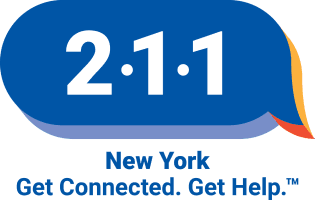Search
NEW YORK STATE COMMISSION FOR THE BLIND (NYSCB) | NEW YORK STATE OFFICE OF CHILDREN AND FAMILY SERVICES
Administers programs and services to enhance employability, maximize independence, and assist in the development of the capacities and strengths of people who are legally blind. Programs include:
Equipment Loan Fund, which allows individuals to borrow up to $4,000 to purchase adaptive equipment.
Children's services for children who are legally blind, including early intervention rehabilitation, working with and empowering parents, arranging services to supplement educational activities, and ensuring a smooth transition to adult services.
Vocational rehabilitation programs for adults and youth ages 14 to 21 years, which provide a number of services, including assessment, information and referral, casework services, job coaching, orientation and mobility training, independent living skills training, and assistive technology assistance.
Independent living services for individuals who are not eligible for vocational rehabilitation services and who are not receiving services through another NYSCB Program. These services are provided based on individual need and may include orientation and mobility services, rehabilitation teaching, low vision services and devices, social casework, and adaptive equipment.
Administers programs and services to enhance employability, maximize independence, and assist in the development of the capacities and strengths of people who are legally blind. Programs include:
Equipment Loan Fund, which allows individuals to borrow up to $4,000 to purchase adaptive equipment.
Children's services for children who are legally blind, including early intervention rehabilitation, working with and empowering parents, arranging services to supplement educational activities, and ensuring a smooth transition to adult services.
Vocational rehabilitation programs for adults and youth ages 14 to 21 years, which provide a number of services, including assessment, information and referral, casework services, job coaching, orientation and mobility training, independent living skills training, and assistive technology assistance.
Independent living services for individuals who are not eligible for vocational rehabilitation services and who are not receiving services through another NYSCB Program. These services are provided based on individual need and may include orientation and mobility services, rehabilitation teaching, low vision services and devices, social casework, and adaptive equipment.
What's Here
LIONS CLUB | IRONDEQUOIT LIONS CLUB
What's Here
EYEGLASSES E-VOUCHER PROGRAM | NEW EYES
What's Here
CHOICE MAGAZINE LISTENING | CHOICE MAGAZINE LISTENING
What's Here
Health Services | A.P. Darling Low Vision Center
What's Here
ITINERANT SERVICES FOR THE VISUALLY IMPAIRED | WESTERN SUFFOLK BOCES SPECIAL EDUCATION DIVISION
What's Here
EMERGENCY SERVICES PROGRAM | CATHOLIC CHARITIES OF THE FINGER LAKES
What's Here
EMERGENCY SERVICES PROGRAM | CATHOLIC CHARITIES OF THE FINGER LAKES
What's Here
LIGHTHOUSE GUILD | LIGHTHOUSE GUILD
What's Here
Core Vision Services | Association for Vision Rehabilitation and Employment (AVRE)
What's Here
Vision Rehabilitation Services - VIA
What's Here
VISION IMPAIRMENT CENTERS TO OPTIMIZE REMAINING SIGHT PROGRAM | VISION IMPAIRMENT CENTERS TO OPTIMIZE REMAINING SIGHT PROGRAM
What's Here
Buffalo VA Medical Center - VA Western NY Healthcare System
What's Here
CBA Vision Rehabilitation Services (Service Group)
What's Here
AMERICAN FOUNDATION FOR THE BLIND | AMERICAN FOUNDATION FOR THE BLIND
What's Here
Low Vision Clinic - Orchard Park - VIA
What's Here
Low Vision Clinic - Lockport - VIA
What's Here
Olean Area Association for the Blind & Visually Impaired
What's Here
Low Vision Clinic - Buffalo - VIA
What's Here
Warsaw Public Library (Service Group)
What's Here
Buffalo Host Lions Club (Service Group)
What's Here
Low Vision Clinic - Amherst - VIA
What's Here
VISION SERVICES | CENTER FOR COMMUNITY ADJUSTMENT
What's Here
Low Vision Clinic - Veterans Affairs
What's Here
READING EQUIPMENT AIDS AND DEVICES ROOM | WEST BABYLON PUBLIC LIBRARY
What's Here
